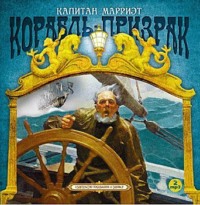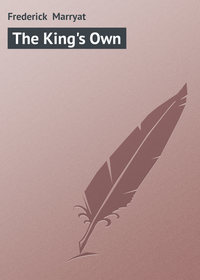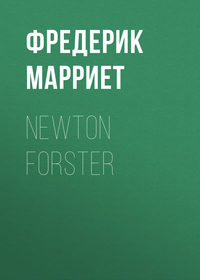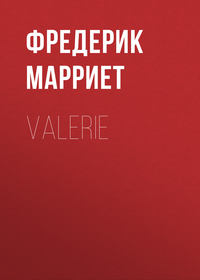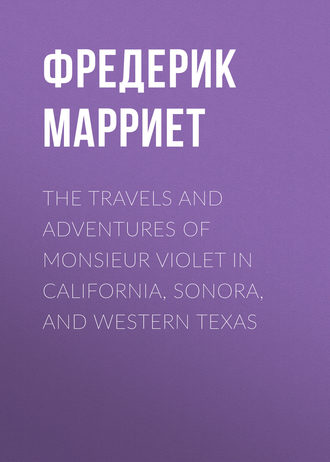 полная версия
полная версияThe Travels and Adventures of Monsieur Violet in California, Sonora, and Western Texas
Of course, we lost no time in lighting a fire and bringing our horses. The meat was soon cooked, and it was wonderful to see how quickly it disappeared in the jaws of our two new friends. We had yet about twelve pounds of it, and we were entering a country where game would be found daily, so we did not repine at their most inordinate appetites, but, on the contrary, encouraged them to continue. When the first pangs of hunger were a little soothed, they both looked at us with moist and grateful eyes.
"Och," said the Irishman, "but ye are kind gentlemen, whatever you may be, to give us so good a meal when, perhaps, you have no more."
Roche shook him by the hand. "Eat on, fellow," he said, "eat on, and never fear. We will afterwards see what can be done for the legs." As to the Welshman, he never said a word for a full half-hour. He would look, but could neither speak nor hear, so intensely busy was he with an enormous piece of half-raw flesh, which he was tearing and swallowing like a hungry wolf. There is, however, an end to everything, and when satiety had succeeded to want, they related to us the circumstance that had led them where they were.
They had come as journeymen with a small caravan going from St. Louis to Astoria. On the Green River they had been attacked by a war-party of the Black-feet, who had killed all except them, thanks to the Irishman's presence of mind, who pushed his fat companion into a deep fissure of the earth, and jumped after him. Thus they saved their bacon, and had soon the consolation of hearing the savages carrying away the goods, leading the mules towards the north. For three days they had wandered south, in the hope of meeting with some trappers, and this very morning they had fallen in with two French trappers, who told them to remain there and repose till their return, as they were going after game.
While they were narrating their history, the two trappers arrived with a fat buck. They were old friends, having both of them travelled and hunted with Gabriel. We resolved not to proceed any further that day, and they laughed a great deal when we related to them our prowess against the Crows. An application of bruised leaves of the Gibson weed upon the legs of the two sufferers immediately soothed their pain, and the next morning they were able to use Roche's and Gabriel's horses, and to follow us to Brownhall, an American fur-trading port, which place we reached in two days.
There we parted from our company, and rapidly continued our march towards the settlement. Ten days did we travel thus in the heart of a fine country, where game at every moment crossed our path. We arrived in the deserted country of the Bonnaxes, and were scarcely two days' journey from the Eastern Shoshone boundary, when, as ill-luck would have it, we met once more with our old enemies the Arrapahoes. This time, however, we were determined not to be put any more on dog's meat allowance, and to fight, if necessary, in defence of our liberty.
We were surrounded, but not yet taken; and space being ours and our rifles true, we hoped to escape, not one of our enemies having, as we well knew, any firearms. They reduced their circle smaller and smaller, till they stood at about a hundred and fifty yards from us; their horses fat and plump, but of the small wild breed, and incapable of running a race with our tall and beautiful Mexican chargers. At that moment Gabriel raised his hand, as if for a signal; we all three darted like lightning through the line of warriors, who were too much taken by surprise even to use their bows. They soon recovered from their astonishment, and giving the war-whoop, with many ferocious yells of disappointment, dashed after us at their utmost speed.
Their horses, as I have said, could not run a race with ours, but in a long chase their hardy little animals would have had the advantage, especially as our own steeds had already performed so long a journey. During the two first hours we kept them out of sight, but towards dark, as our beasts gave in, we saw their forms in the horizon becoming more and more distinct, while, to render our escape less probable, we found ourselves opposed in front by a chain of mountains, not high, but very steep and rugged.
"On, ahead, we are safe!" cried Gabriel. Of course, there was no time for explanation, and ten minutes more saw us at the foot of the mountain. "Not a word, but do as I do," again said my companion. We followed his example by unsaddling our animals and taking off the bridles, with which we whipped them. The poor things, though tired, galloped to the south, as if they were aware of the impending danger.
"I understand, Gabriel," said I; "the savages cannot see us in the shades of these hills; they will follow our horses by the sounds."
Gabriel chuckled with delight. "Right," said he, "right enough, but it is not all. I know of a boat on the other side of the mountain, and the Ogden river will carry us not far from the Buona Ventura."
I started. "A mistake," I exclaimed, "dear friend, a sad mistake; we are more than thirty miles from the river."
"From the main river, yes," answered he, shaking my hand, "but many an otter have I killed in a pretty lake two miles from here, at the southern side of this hill. There I have a boat well concealed, as I hope; and it is a place where we may defy all the Arrapahoes, and the Crows to back them. From that lake to the river it is but thirty miles' paddling in a smooth canal, made either by nature or by a former race of men."
I need not say how cheerfully we walked these two miles, in spite of the weight of our saddles, rifles, and accoutrements. Our ascent was soon over, and striking into a small tortuous deer-path, we perceived below us the transparent sheet of water, in which a few stars already reflected their pale and tremulous light. When we reached the shore of the lake, we found ourselves surrounded by vast and noble ruins, like those on the Buona Ventura, but certainly much more romantic. Gabriel welcomed us to his trapping-ground, as a lord in his domain, and soon brought out a neat little canoe from under a kind of ancient vault.
"This canoe," said he, "once belonged to one of the poor fellows that was murdered with the Prince Seravalle. We brought it here six years ago with great secrecy; it cost him twenty dollars, a rifle, and six blankets. Now, in the middle of this lake there is an island, where he and I lived together, and where we can remain for months without any fear of Indians or starvation."
We all three entered the canoe, leaving our saddles behind us, to recover them on the following day. One hour's paddling brought us to the island, and it was truly a magnificent spot. It was covered with ruins; graceful obelisks were shaded by the thick foliage of immense trees, and the soft light of the moon, beaming on the angles of the ruined monuments, gave to the whole scenery the hue of an Italian landscape.
"Here we are safe," said Gabriel, "and to-morrow you will discover that my old resting-place is not deficient in comfort."
As we were very tired, we lay down and soon slept, forgetting in this little paradise the dangers and the fatigues of the day. Our host's repose, however, was shorter than mine, for long before morn he had gone to fetch our saddles. Roche and I would probably have slept till his return, had we not been awakened by the report of a rifle, which came down to us, repeated by a thousand echoes. An hour of intense anxiety was passed, till at last we saw Gabriel paddling towards us. The sound of the rifle had, however, betrayed our place of concealment, and as Gabriel neared the island, the shore opposite to us began to swarm with our disappointed enemies, who in all probability had camped in the neighbourhood. As my friend landed, I was beginning to scold him for his imprudence in using his rifle under our present circumstances, when a glance showed me at once he had met with an adventure similar to mine near Santa Fé. In the canoe lay the skin of a large finely-spotted jaguar, and by it a young cub, playing unconsciously with the scalping-knife, yet reeking in its mother's blood.
"Could not help it,–self-defence!" exclaimed he, jumping on shore. "Now the red devils know where we are, but it is a knowledge that brings them little good. The lake is ten fathoms in depth, and they will not swim three miles under the muzzles of our rifles. When they are tired of seeing us fishing, and hearing us laughing, they will go away like disappointed foxes."
So it proved. That day we took our rifles and went in the canoe to within eighty yards of the Indians, on the mainland, we fishing for trouts, and inviting them to share in our sport. They yelled awfully, and abused us not a little, calling us by all the names their rage could find: squaws, dogs of Pale-faces, cowards, thieves, &c. At last, however, they retired in the direction of the river, hoping yet to have us in their power; but so little had we to fear, that we determined to pass a few days on the island, that we might repose from our fatigues.
When we decided upon continuing our route, Gabriel and Roche were obliged to leave their saddles and bridles behind, as the canoe was too small for ourselves and luggage. This was a misfortune which could be easily repaired at the settlement, and till then, saddles, of course, were useless. We went on merrily from forty-five to fifty miles every day, on the surface of the most transparent and coolest water in the world. During the night we would land and sleep on the shore. Game was very plentiful, for at almost every minute we would pass a stag or a bull drinking; sometimes at only twenty yards, distance.
During this trip on the Ogden river, we passed four other magnificent lakes, but not one of them bearing any marks of former civilization, as on the shores of the first one which had sheltered us. We left the river two hundred and forty miles from where we had commenced our navigation, and, carrying our canoe over a portage of three miles, we launched it again upon one of the tributaries of the Buona Ventura, two hundred miles north-east from the settlement.
The current was now in our favour, and in four days more we landed among my good friends, the Shoshones, who, after our absence of nine months, received us with almost a childish joy. They had given us up for dead, and suspecting the Crows of having had a hand in our disappearance, they had made an invasion into their territory.
Six days after our arrival our three horses were perceived swimming across the river; the faithful animals had also escaped from our enemies, and found their way back to their masters and their native prairies.
CHAPTER XV
During my long absence and captivity among the Arrapahoes, I had often reflected upon the great advantages which would accrue if, by any possibility, the various tribes which were of Shoshone origin could be induced to unite with them in one confederacy; and the more I reflected upon the subject, the more resolved I became, that if ever I returned to the settlement, I would make the proposition to our chiefs in council.
The numbers composing these tribes were as follows:–The Shoshones amounting to about 60,000, independent of the mountain tribes, which we might compute at 10,000 more; the Apaches, about 40,000; the Arrapahoes, about 20,000; the Comanches and the tribes springing from them, at the lowest computation, amounting to 60,000 more. Speaking the same language, having the same religious formula, the same manners and customs; nothing appeared to me to be more feasible. The Arrapahoes were the only one tribe which was generally at variance with us, but they were separated from the Shoshones much later than the other tribes, and were therefore even more Shoshone than the Apaches and Comanches.
Shortly after my return, I acted upon my resolution. I summoned all the chiefs of our nation to a great council, and in the month of August, 1839, we were all assembled outside of the walls of the settlement. After the preliminary ceremonies, I addressed them:–
"Shoshones! brave children of the Grand Serpent! my wish is to render you happy, rich, and powerful. During the day I think of it; I dream of it in my sleep. At last, I have had great thoughts–thoughts proceeding from the Manitou. Hear now the words of Owato Wanisha; he is young, very young; his skin is that of a Pale-face, but his heart is a Shoshone's.
"When you refused to till the ground, you did well, for it was not in your nature–the nature of man cannot be changed like that of a moth. Yet, at that time, you understood well the means which give power to a great people. Wealth alone can maintain the superiority that bravery has asserted. Wealth and bravery make strength–strength which nothing can break down, except the great Master of Life.
"The Shoshones knew this a long time ago; they are brave, but they have no wealth; and if they still keep their superiority, it is because their enemies are at this time awed by the strength and the cunning of their warriors. But the Shoshones, to keep their ground, will some day be obliged to sleep always on their borders, to repel their enemies. They will be too busy to fish and to hunt. Their squaws and children will starve! Even now the evil has begun. What hunting and what fishing have you had this last year? None! As soon as the braves had arrived at their hunting-ground, they were obliged to return back to defend their squaws and to punish their enemies.
"Now, why should not the Shoshones put themselves at once above the reach of such chances? why should they not get rich? They object to planting grain and tobacco. They do well, as other people can do that for them; but there are many other means of getting strength and wealth. These I will teach to my tribe!
"The Shoshones fight the Crows, because the Crows are thieves; the Flat-heads, because they are greedy of our buffaloes; the Umbiquas, because they steal horses. Were it not for them, the children of the Grand Serpent would never fight; their lodges would fill with wealth, and that wealth would purchase all the good things of the white men from distant lands. These white men-come to the Watchinangoes (Mexicans), to take the hides of their oxen, the wool of their sheep. They would come to us, if we had anything to offer them. Let us then call them, for we have the hides of thousands of buffaloes; we have the furs of the beaver and the otter; we have plenty of copper in our mountains, and of gold in our streams.
"Now, hear me. When a Shoshone chief thinks that the Crows will attack his lodge, he calls his children and his nephews around him. A nation can do the same. The Shoshones have many brave children in the prairies of the South; they have many more on the borders of the Yankees. All of them think and speak like their ancestors, they are the same people. Now would it not be good and wise to have all these brave grand-children and grand-nephews as your neighbours and allies, instead of the Crows, the Cayuses, and the Umbiquas? Yes, it would. Who would dare to come from the north across a country inhabited by the warlike Comanches, or from the south and the rising sun, through the wigwams of the Apaches? The Shoshones would then have more than 30,000 warriors; they would sweep the country, from the sea to the mountains, from the river of the north (Columbia) to the towns of the Watchinangoes. When the white men would come in their big canoes, as traders and friends, we would receive them well; if they come as foes, we will laugh at them, and whip them like dogs. These are the thoughts which I wanted to make known to the Shoshones.
"During my absence, I have seen the Apaches and the Comanches. They are both great nations. Let us send some wise men to invite them to return to their fathers; let our chiefs offer them wood, land, and water. I have said."
As long as I spoke, the deepest silence reigned over the whole assembly; but as soon as I sat down, and began smoking, there was a general movement, which showed me that I had made an impression. The old great chief rose, however, and the murmurs were hushed. He spoke:–
"Owato Wanisha has spoken. I have heard. It was a strange vision, a beautiful dream. My heart came young again, my body lighter, and my eyes more keen. Yet I cannot see the future; I must fast and pray, I must ask the great Master of Life to lend me his wisdom.
"I know the Comanches, I know the Apaches, and the Arrapahoes. They are our children; I know it. The Comanches have left us a long, long time, but the Apaches and Arrapahoes have not yet forgotten the hunting-grounds where their fathers were born. When I was but a young hunter, they would come every snow to the lodge of our Manitou, to offer their presents. It was long before any Pale-face had passed the mountains. Since that the leaves of the oaks have grown and died eighty times. It is a long while for a man, but for a nation it is but as yesterday.
"They are our children,–it would be good to have them with us; they would share our hunts; we would divide our wealth with them. Then we would be strong. Owato Wanisha has spoken well; he hath learned many mysteries with the Macota Conaya (black robes, priests); he is wise. Yet, as I have said, the red-skin chiefs must ask wisdom from the Great Master. He will let us know what is good and what is bad. At the next moon we will return to the council. I have said."
All the chiefs departed, to prepare for their fasting and ceremonies, while Gabriel, Roche, my old servant, and myself, concerted our measures so as to insure the success of my enterprise. My servant I despatched to Monterey, Gabriel to the nearest village of the Apaches, and as it was proper, according to Indian ideas, that I should be out of the way during the ceremonies, so as not to influence any chief, I retired with Roche to the boat-house, to pass the time until the new moon.
Upon the day agreed upon, we were all once more assembled at the council-ground on the shores of the Buona Ventura, The chiefs and elders of the tribe had assumed a solemn demeanour, and even the men of dark deeds (the Médecins) and the keepers of the sacred lodges had made their appearance, in their professional dresses, so as to impress upon the beholders the importance of the present transaction. One of the sacred lodge first arose, and making a signal with his hand, prepared to speak:–
"Shoshones," said he, "now has come the time in which out nation must either rise above all others, as the eagle of the mountains rises above the small birds, or sink down and disappear from the surface of the earth. Had we been left such as we were before the Pale-faces crossed the mountains, we would have needed no other help but a Shoshone heart and our keen arrows to crush our enemies; but the Pale-faces have double hearts as well as a double tongue; they are friends or enemies as their thirst for wealth guides them. They trade with the Shoshones, but they also trade with the Crows and the Umbiquas. The young chief, Owato Wanisha, hath proposed a new path to our tribe; he is young, but he has received his wisdom from the Black-gowns, who, of all men, are the most wise. I have heard, as our elders and ancient chiefs have also heard, the means by which he thinks we can succeed: we have fasted, we have prayed to the Master of Life to show unto us the path which we must follow. Shoshones, we live in a strange time! Our great Manitou bids us Red-skins obey the Pale-face, and follow him to conquer or die. I have said! The chief of many winters will now address his warriors and friends!"
A murmur ran through the whole assembly, who seemed evidently much moved by this political speech from one whom they were accustomed to look upon with dread, as the interpreter of the will of heaven. The old chief, who had already spoken in the former council, now rose and spoke with a tremulous yet distinct voice.
"I have fasted, I have prayed, I have dreamed. Old men, who have lived almost all their life, have a keener perception *to read the wishes of the Master of Life concerning the future. I am a chief, and have been a chief during sixty changes of the season. I am proud of my station, and as I have struck deepest in the heart of our enemies, I am jealous of that power which is mine, and would yield it to no one, if the great Manitou did not order it. When this sun will have disappeared behind the salt-water, I shall no longer be a chief! Owato Wanisha will guide our warriors, he will preside in council, for two gods are with him–the Manitou of the Pale-faces and the Manitou of the Red-skins.
"Hear my words, Shoshones! I shall soon join my father and grandfather in the happy lands, for I am old! Yet, before my bones are buried at the foot of the hills, it would brighten my heart to see the glory of the Shoshones, which I know must be in a short time. Hear my words! Long ages ago some of our children, not finding our hunting-grounds wide enough for the range-of their arrows, left us. They first wandered in the south, and in the beautiful prairies of the east, under a climate blessed by the good spirits. They grew and grew in number till their families were as numerous as ours, and as they were warriors and their hearts big, they spread themselves, and, soon crossing the big mountains, their eagle glance saw on each side of their territory the salt-water of the sunrise and the salt-water of the sunset. These are the Comanches, a powerful nation. The Comanches even now have a Shoshone heart, a Shoshone tongue. Owato Wanisha has been with them; he says they are friends, and have not forgotten that they are the children of the Great Serpent.
"Long, long while afterwards, yet not long enough that I should escape the memory and the records of our holy men, some other of our children, hearing of the power of the Comanches of their wealth, of their beautiful country, determined also to leave us and spread to the south. These are the Apaches From the top of the big mountains, always covered with snow they look towards the bed of the sun. They see the green grass of the prairie below them, and afar the blue salt-water Their houses are as numerous as the stars in heaven, their warriors as thick as the shells in the bottom of our lakes. They are brave; they are feared by the Pale-faces–by all; and they too, know that we are their fathers; their tongue is our tongue their Manitou our Manitou; their heart a portion of our heart and never has the knife of a Shoshone drunk the blood of a Apache, nor the belt of an Apache suspended the scalp of Shoshone.
"And afterwards, again, more of our children left us. By that time they left us because we were angry. They were few families of chiefs who had grown strong and proud. They wished to lord over our wigwams, and we drove them away, as the panther drives away her cubs, when their claws and teeth have been once turned against her. These are the Arrapahoes They are strong and our enemies, yet they are a noble nation. I have in my lodge twenty of their scalps; they have many ours. They fight by the broad light of the day, with the lane bow, and arrows; they scorn treachery. Are they not although rebels and unnatural children, still the children, of the Shoshones? Who ever heard of the Arrapahoes entering the war-path in night? No one! They are no Crows, no Umbiquas, no Flat-heads! They can give death; they know how to receive it,–straight and upright, knee to knee, breast to breast, and their eye drinking the glance of their foe.
"Well, these Arrapahoes are our neighbours; often, very often, too much so (as many of our widows can say), when they unbury their tomahawk and enter the war-path against the Shoshones. Why; can two suns light the same prairie, or two male eagles cover the same nest? No. Yet numerous stars appear during night, all joined together, and obedient to the moon. Blackbirds and parrots will unite their numerous tribes and take the same flight to seek altogether a common rest a shelter for a night; it is a law of nature. The Red-skin knows none but the laws of nature. The Shoshone is an eagle on the hills, a bright sun in the prairie, so is an Arrapahoe; they must both struggle and fight till one sun is thrown into darkness, or one eagle, blind and winged, falls down the rocks and leaves the whole nest to its conqueror. The Arrapahoes would not fight a cowardly Crow, except for self-defence, for he smells of carrion; nor would a Shoshone.
"Crows, Umbiquas, and Flat-heads, Cayuses, Bonnaxes, and Callapoos can hunt all together and rest together; they are the blackbirds and the parrots; they must do so, else the eagle should destroy them during the day, or the hedgehog during the night.



